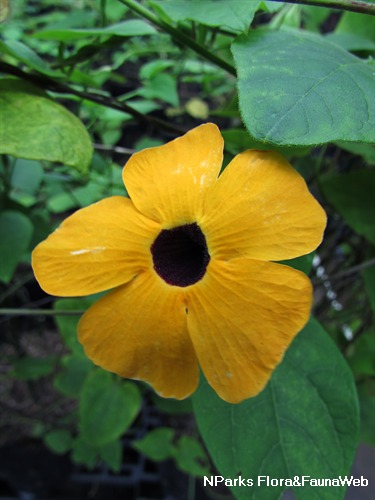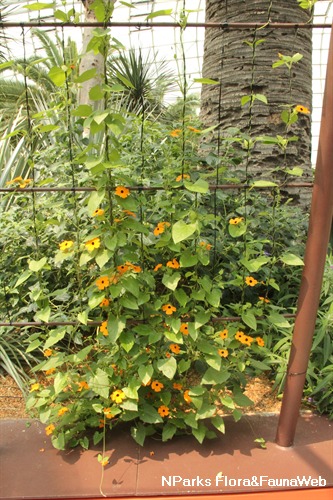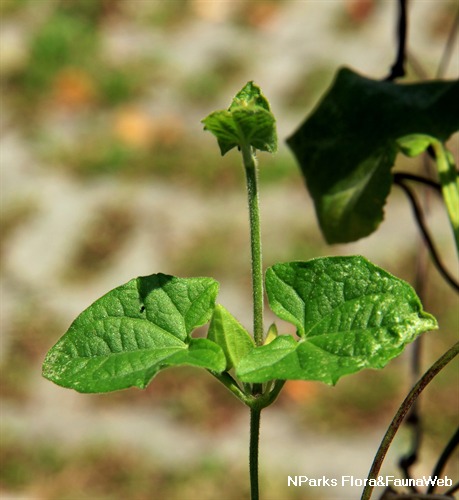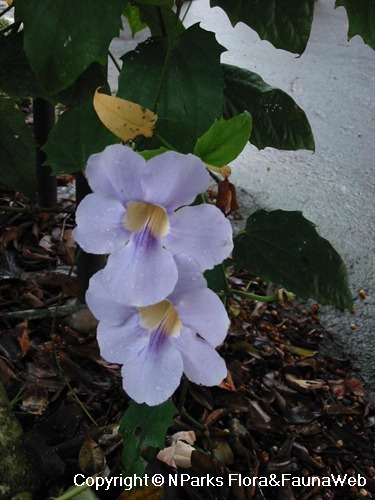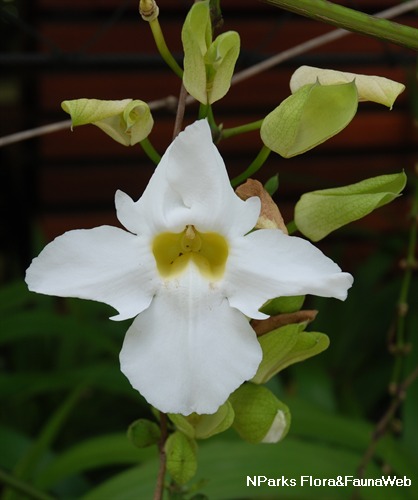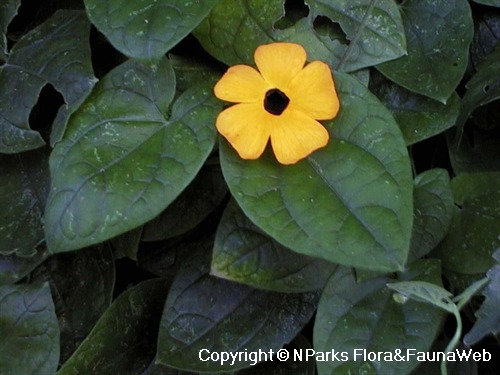
Name
Classifications and Characteristics
| Plant Growth Form | Climber |
|---|
Biogeography
| Native Distribution | South East Africa |
|---|
Description and Ethnobotany
| Growth Form | Herbaceous vine with a creeping growth habit. |
|---|---|
| Foliage | Heart-shaped or arrow-shaped leaves with smooth or toothed edges. Leaves are covered in soft hairs. |
| Flowers | Yellow to orange, star-shaped flowers are composed of 5 squarish to obovate petals. Petal tips are approximately truncate, but have a curved indentation in the middle. The inside of the floral tube is lined with a purplish black or dark maroon colour. Flowers occur singly in the leaf axils. The flowers reflect UV light in a pattern that helps pollinating insects find the center of the flower. |
| Fruit | The fruit is approximately round, but has a long, pointed beak like that of a bird. |
| Habitat | Often found along forest margins. |
| Etymology | The genus 'Thunbergia' is named after Carl Peter Thunberg, a Swedish doctor who studied under Carl Linnaeus. |
Landscaping Features
| Desirable Plant Features | Ornamental Flowers |
|---|
Fauna, Pollination and Dispersal
| Fauna Pollination Dispersal Associated Fauna | Caterpillar Moth Food Plant (Leaves) |
|---|---|
| Pollination Method(s) | Biotic (Fauna) (Insects (Bee)) |
Plant Care and Propagation
| Light Preference | Full Sun, Semi-Shade |
|---|---|
| Water Preference | Moderate Water |
| Plant Growth Rate | Fast |
| Pest(s) | Chewing Insects |
| Propagation Method | Stem Cutting |
Foliar
| Mature Foliage Colour(s) | Green |
|---|
Floral (Angiosperm)
| Flower Colour(s) | Orange, Black, Yellow / Golden |
|---|---|
| Flower Texture(s) | Smooth |
| Flower Location | Axillary |
| Flower Symmetry | Radial |
| Individual Flower Shape | Stellate / Star-shaped |
Image Repository
Others
| Master ID | 222 |
|---|---|
| Species ID | 1518 |
| Flora Disclaimer | The information in this website has been compiled from reliable sources, such as reference works on medicinal plants. It is not a substitute for medical advice or treatment and NParks does not purport to provide any medical advice. Readers should always consult his/her physician before using or consuming a plant for medicinal purposes. |

